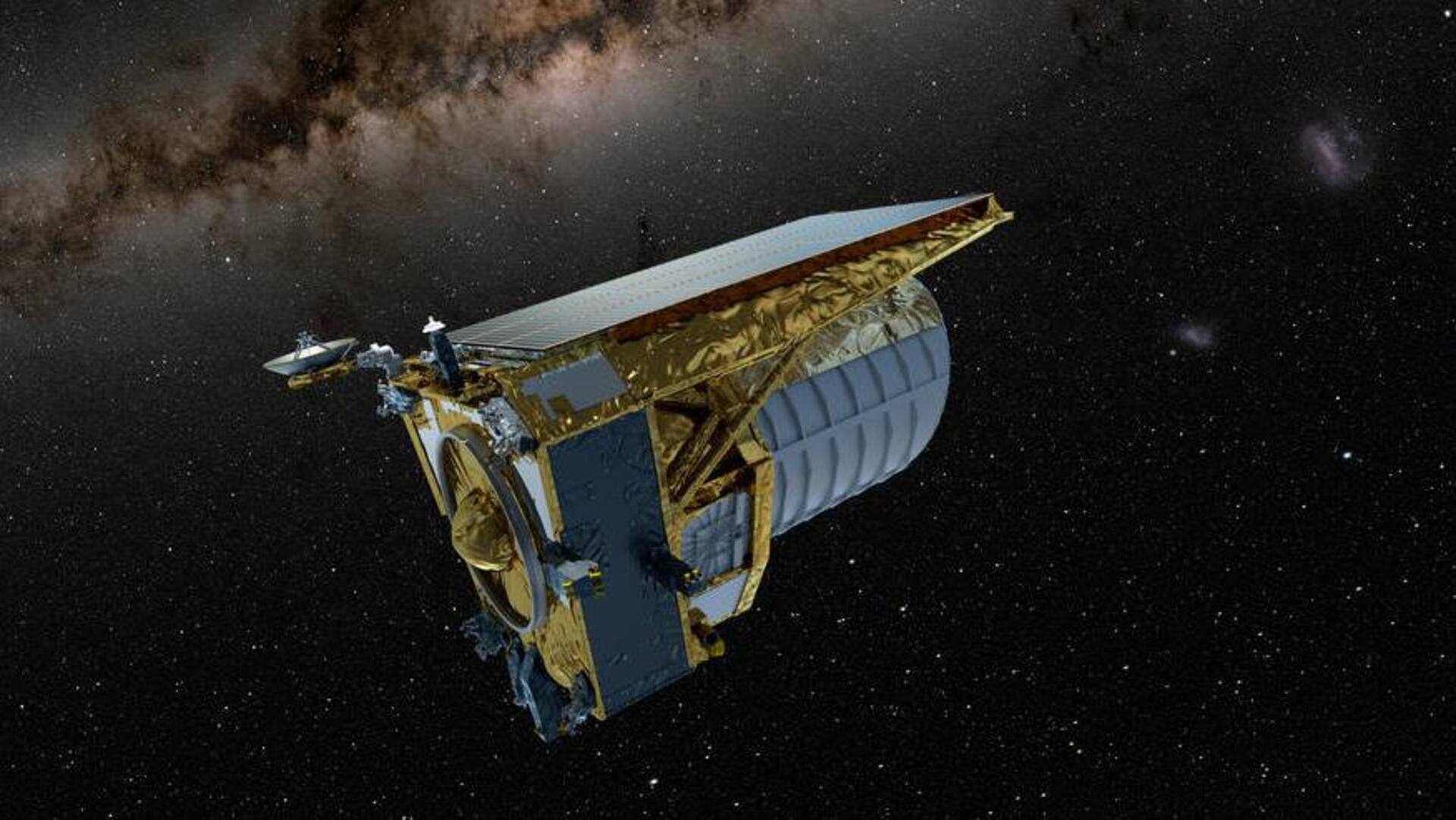
ESA's Euclid mission launches to explore dark mysteries of cosmos
What's the story
The Euclid mission, built by the European Space Agency (ESA) along with inputs from NASA, has successfully launched. The 14.7-foot-tall space telescope will explore the dark side of the cosmos, particularly dark energy and dark matter, providing crucial insights into the workings of the universe. The mission took to space aboard a SpaceX Falcon 9 rocket from Cape Canaveral in Florida.
Signal
Euclid will send a signal 46 minutes after launch
According to plans, the Euclid spacecraft is expected to separate from the Falcon 9 rocket roughly 42 minutes after liftoff. The mission controllers expect the telescope to send its first signal about 46 minutes into launch. The space telescope has a month-long journey ahead to make its way to its target destination at the L2 Lagrange point, about 1.6 million km from Earth.
Timeline
Euclid will survey more than a third of the sky
The Euclid mission will observe over a third of the sky, studying billions of galaxies to provide insights into dark matter and dark energy that together make up 95% of the universe. Dark matter and dark energy are invisible. Astronomers study dark matter based on the gravitational pull it has on galaxies and dark energy, fulfilling its role in the acceleration of the universe.
Payload
Euclid carries a 1.2-meter-wide mirror and two instruments
Euclid is equipped with a 1.2-meter-wide mirror and two instruments: a visible imager (VIS) and a near-infrared spectrometer and photometer (NISP) to carry out scientific investigations. The key highlight is the VIS optical camera will be capable of observing much more of the universe in a day compared to what Hubble Space Telescope has achieved in the past 25 years.
Location
Euclid shares its location with JWST
From its vantage point at the halo-like orbit around the L2, Euclid will be able to get unprecedented views of the universe. The observatory will always be facing away from the direction of the Moon, Earth, and the Sun. The telescope will share its location with a few other spacecraft including the famous James Webb Space Telescope (JWST).
Collaboration
Euclid will team up with NASA's Roman telescope in 2027
Euclid will be joined by NASA's Nancy Grace Roman Space Telescope by May 2027. Both missions are designed to study the acceleration of the universe and each will create a 3D dark matter map of the cosmos. Euclid and Roman will be much more powerful working together, than as stand-alone missions, and are expected to provide key insights into the workings of the universe.
Information
Euclid will undergo testing before commencing operations
Over the next three months, Euclid will undergo a number of calibrations and testing before it can start conducting science investigations, per ESA. Following the calibration period, the mission will commence its extensive survey of the universe. It is estimated to operate for six years.